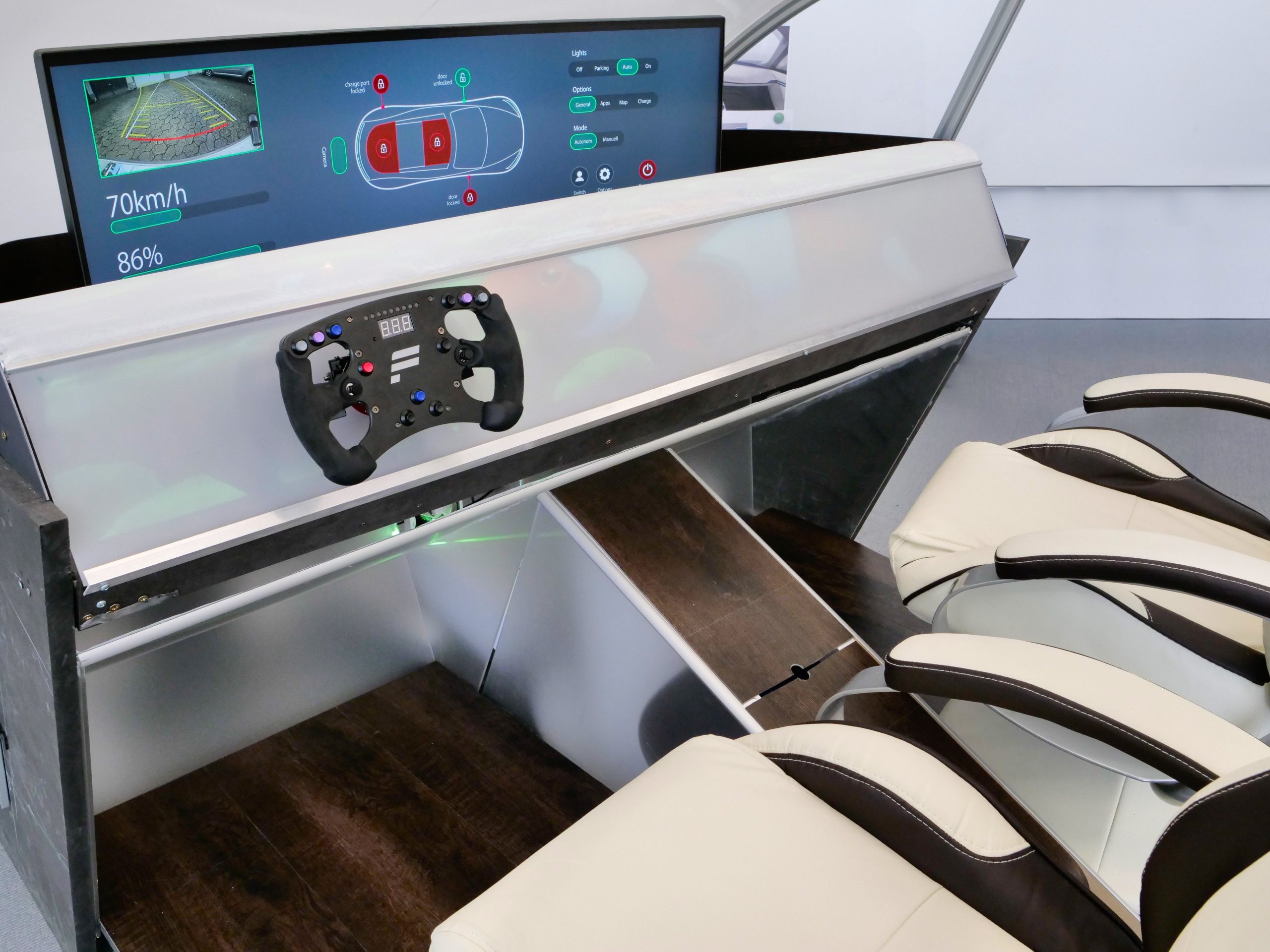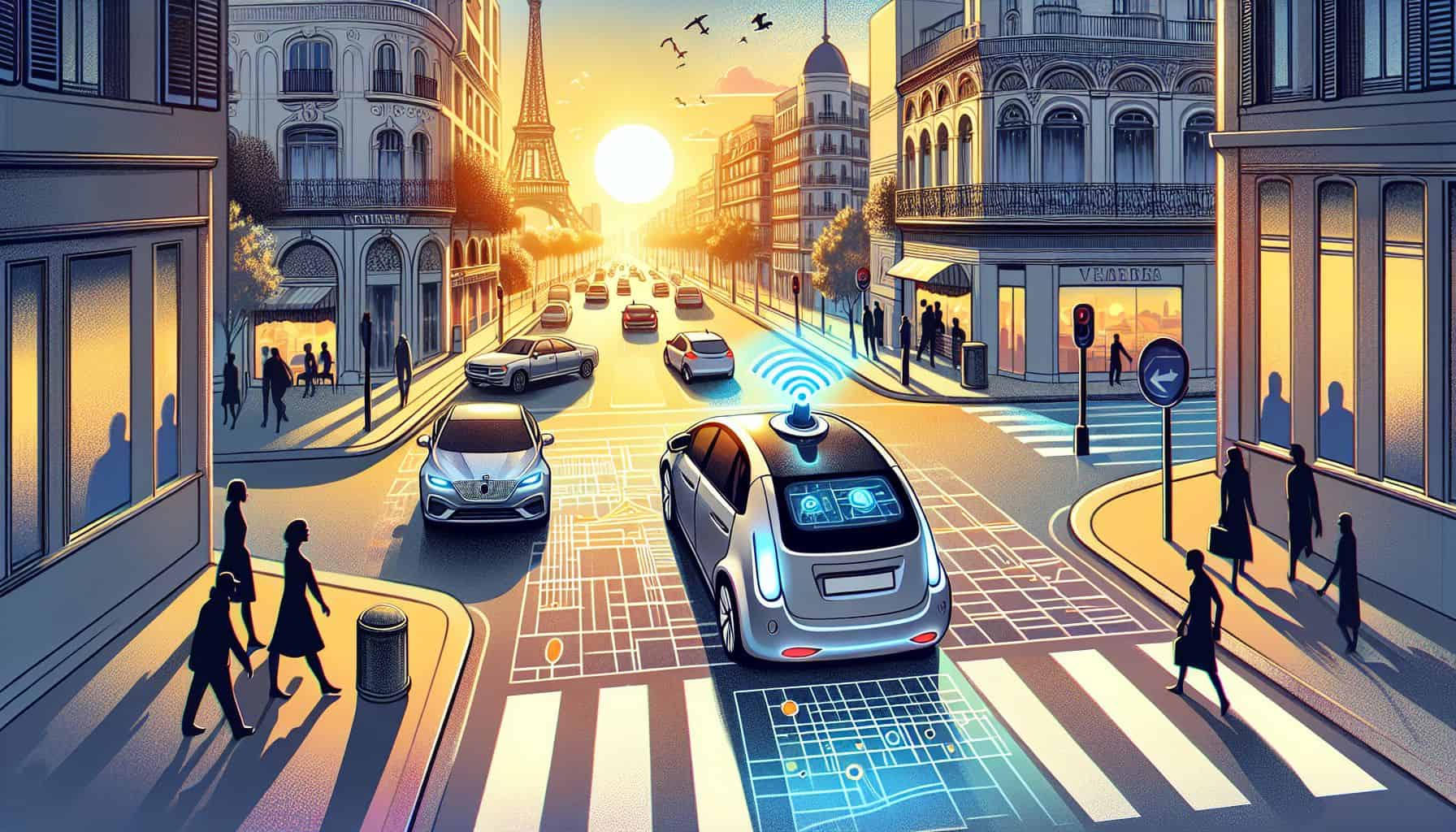
A driver’s seat with a steering wheel and pedals could be a thing of the past in ten years time. At least this is what scientists at the Fraunhofer Institute for Industrial Engineering IAO and the McKinsey Center for Future Mobility in Stuttgart believe. As part of the newly founded “Mobility Experience and Technology Labs” (MXT Lab), they have been studying what the interior of a car will look like once autonomous mobility has become established and a human driver becomes obsolete.
“Ever-increasing digitization in terms of networking and automation is changing our vehicles not just technologically, but also the entire driving experience itself,” explains Dr. Florian Herrmann, Institute Director at the Fraunhofer IAO and Head of the Mobility and Innovation Systems Research Unit. So what role will people play who are at the moment still responsible for getting themselves and their passengers safely from A to B? And what are the requirements when it comes to design, service and mobility concepts for vehicle interiors?
Collaboration with manufacturers
As part of the MXT Lab, which other companies may also participate in, researchers are now investigating the emerging innovation potential. “At so-called round tables, companies from the automotive industry are able to contribute their ideas to the lab and actively address the challenges and opportunities presented by a fully networked and increasingly automated future,” they explain. Over the coming years, for example, “an ecosystem of players from a wide variety of industries will be set up with the aim of conducting joint research on the mobility experience of the future.”

Instead of having to drive and concentrate on the traffic, one could work, play, watch movies or learn a new language in an autonomous car with the help of special a software assistant and vehicle technologies. In an international, quantitative survey, the group looked into how appealing it might be to learn a language when using an automated vehicle. It also examined how such services should be implemented and to what extent these services influence vehicle technologies or navigation. The findings of the survey were then verified qualitatively using a group of test subjects in a laboratory experiment at the MXT Lab.
And this prospect of learning a new language has proven to be very interesting. 90% of the respondents showed a general interest in using car travel as a way to learn new languages or improve their foreign language skills. 50% would also like to use an interactive program, 19% even on a daily basis. In the MXT Lab, more than 90% of the respondents elected to project the educational content onto their windscreens. Incidentally, 70% of the respondents in automated cars chose to use the free time to watch films, read or communicate.
Interior design and experience more important than horsepower
This new reality in the car now poses a challenge to both manufacturers and service and technology companies as they seek to identify at an early stage which innovations could generate particular benefits and which innovations should trigger them, explains Timo Möller of McKinsey and head of the McKinsey Center for Future Mobility. “Mobility will be completely reinvented in the future. The importance of speed and so on is decreasing, emphasis on the interior is gaining in importance.”

The MXT Lab develops and tests new ideas for the mobility of the future. “The MXT Lab excels in the evaluation of completely new technologies: Results from online surveys were able to be fine-tuned and qualitatively tested in the Stuttgart lab using a highly flexible demonstration model and real experiments with more than 20 test subjects,” explains Tobias Schneiderbauer, project manager at McKinsey.
Nevertheless, such projects are just the start for the MXT Lab, Sebastian Stegmüller stresses. He is the team leader responsible for the MXT Lab at the Fraunhofer IAO. “In the future, we will pursue a wide-ranging research agenda in coordination with our member companies. From the interaction between autonomous vehicles and pedestrians – to context-specific activities and content in automated vehicles – to the exploration of future inter-modal mobility solutions where many areas are plausible”.
Find more articles on autonomous driving here.








